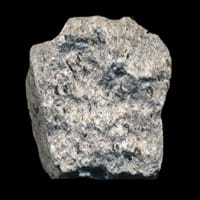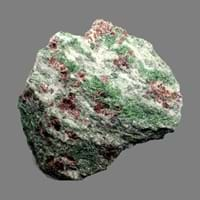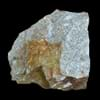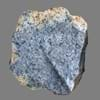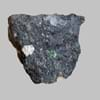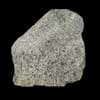Porphyry and Eclogite
Definition
Definition
Porphyry is a reddish-brown to purple igneous rock containing large phenocrysts of various minerals embedded in a fine-grained matrix
Eclogite is an extreme metamorphic rock, formed by regional metamorphism of basalt rock under very high pressure and temperature
History
Origin
Egypt
Unknown
Discoverer
Unknown
René Just Haüy
Etymology
From Old French porfire, from Italian porfiro and in some cases directly from Latin porphyrites
From French, Greek eklogē selection with reference to the selective content of the rock + -ite1
Class
Igneous Rocks
Metamorphic Rocks
Sub-Class
Durable Rock, Hard Rock
Durable Rock, Medium Hardness Rock
Family
Group
Plutonic
Not Applicable
Other Categories
Fine Grained Rock, Opaque Rock
Fine Grained Rock, Opaque Rock
Texture
Texture
Porphyritic
Earthy
Color
Black, Brown, Colourless, Green, Grey, Red, Rust, White
Black, Brown, Colourless, Green, Grey, Pink, White
Maintenance
Less
Less
Durability
Durable
Durable
Water Resistant
No
No
Scratch Resistant
Yes
Yes
Stain Resistant
Yes
Yes
Wind Resistant
No
Yes
Acid Resistant
Yes
No
Appearance
Dull
Dull, Banded and Foilated
Uses
Architecture
Interior Uses
Decorative Aggregates, Interior Decoration
Decorative Aggregates, Interior Decoration
Exterior Uses
Garden Decoration, Paving Stone
Paving Stone, Garden Decoration
Other Architectural Uses
Curbing
Curbing
Industry
Construction Industry
Construction Aggregate
Not Yet Used
Medical Industry
Not Yet Used
In Chemical and Pharmaceutical Industry, Medicines and Cosmetics
Antiquity Uses
Artifacts, Monuments, Sculpture
Artifacts
Other Uses
Commercial Uses
Creating Artwork, Gemstone, Jewelry
Creating Artwork, Gemstone
Types
Types
Rhomb Porphyry
Not Available
Features
Generally rough to touch, Is one of the oldest rock, Surfaces are often shiny
Available in Lots of Colors and Patterns, Generally rough to touch, Is one of the oldest rock
Archaeological Significance
Monuments
Used
Not Yet Used
Famous Monuments
Data Not Available
Not Applicable
Sculpture
Used
Not Yet Used
Famous Sculptures
Data Not Available
Not Applicable
Pictographs
Not Used
Used
Petroglyphs
Not Used
Used
Figurines
Used
Not Yet Used
Fossils
Absent
Absent
Formation
Formation
Porphyry is formed in two stages: the magma cools slowly deep within the crust or the magma is cools rapidly as it erupts from a volcano, creating small grains that are usually invisible to naked eye.
Eclogite forms from high-pressure metamorphism of mafic igneous rocks mainly, basalt or gabbro as it plunges into the mantle in a subduction zone.
Composition
Mineral Content
Biotite, Chert, Feldspar, Garnet, Graphite, Quartz, Silica
Amphibole, Coesite, Corundum, Dolomite, Garnet, Kyanite, Lawsonite, Paragonite, Phengite, Pyroxene, Quartz, Rutile, Zoisite
Compound Content
Aluminium Oxide, CaO, Iron(III) Oxide, Potassium Oxide, MgO, Sodium Oxide, Silicon Dioxide, Titanium Dioxide
Aluminium Oxide, NaCl, CaO, Carbon Dioxide, Iron(III) Oxide, Magnesium Carbonate, MgO, Sodium Oxide, Potassium, Sodium
Transformation
Metamorphism
Yes
No
Types of Metamorphism
Burial Metamorphism, Cataclastic Metamorphism, Contact Metamorphism, Hydrothermal Metamorphism, Impact Metamorphism, Regional Metamorphism
Not Applicable
Weathering
Yes
Yes
Types of Weathering
Biological Weathering, Chemical Weathering, Not Registered
Mechanical Weathering
Erosion
Yes
Yes
Types of Erosion
Chemical Erosion, Coastal Erosion, Glacier Erosion
Chemical Erosion, Sea Erosion
Properties
Physical Properties
Hardness
6-7
3.5-4
Grain Size
Fine Grained
Fine Grained
Fracture
Irregular
Not Available
Streak
White
White
Porosity
Less Porous
Less Porous
Luster
Dull
Subvitreous to Dull
Cleavage
Imperfect
Perfect
Toughness
1.7
Not Available
Specific Gravity
2.5-4
2.86-2.87
Transparency
Translucent to Opaque
Opaque
Density
2.5-2.52 g/cm3
3.2-3.6 g/cm3
Thermal Properties
Resistance
Heat Resistant, Impact Resistant
Heat Resistant
Reserves
Deposits in Eastern Continents
Asia
China, Kazakhstan, South Korea, Thailand, Turkey, Vietnam
India, Kazakhstan, Kuwait, Russia, South Korea, Thailand, Turkey
Africa
Egypt, Ethiopia, Ghana, South Africa
Ethiopia, Morocco, South Africa
Europe
Finland, France, Germany, Great Britain, Hungary, Iceland, Ireland, Italy, Netherlands, Norway, Romania, Sweden, Switzerland
France, Germany, Italy, Norway, Scotland
Others
Greenland
Greenland
Deposits in Western Continents
North America
Canada, Cuba, Jamaica, USA
Canada, Costa Rica, Panama, USA
South America
Bolivia, Brazil, Colombia, Ecuador, Paraguay
Argentina, Brazil, Colombia, Ecuador
Deposits in Oceania Continent
Australia
New South Wales, New Zealand, Western Australia
Central Australia, New Zealand, Queensland
All about Porphyry and Eclogite Properties
Know all about Porphyry and Eclogite properties here. All properties of rocks are important as they define the type of rock and its application. Porphyry belongs to Igneous Rocks while Eclogite belongs to Metamorphic Rocks.Texture of Porphyry is Porphyritic whereas that of Eclogite is Earthy. Porphyry appears Dull and Eclogite appears Dull, Banded and Foilated. The luster of Porphyry is dull while that of Eclogite is subvitreous to dull. Porphyry is available in black, brown, colourless, green, grey, red, rust, white colors whereas Eclogite is available in black, brown, colourless, green, grey, pink, white colors. The commercial uses of Porphyry and Eclogite are creating artwork, gemstone, jewelry.
|
||
|
||
|
